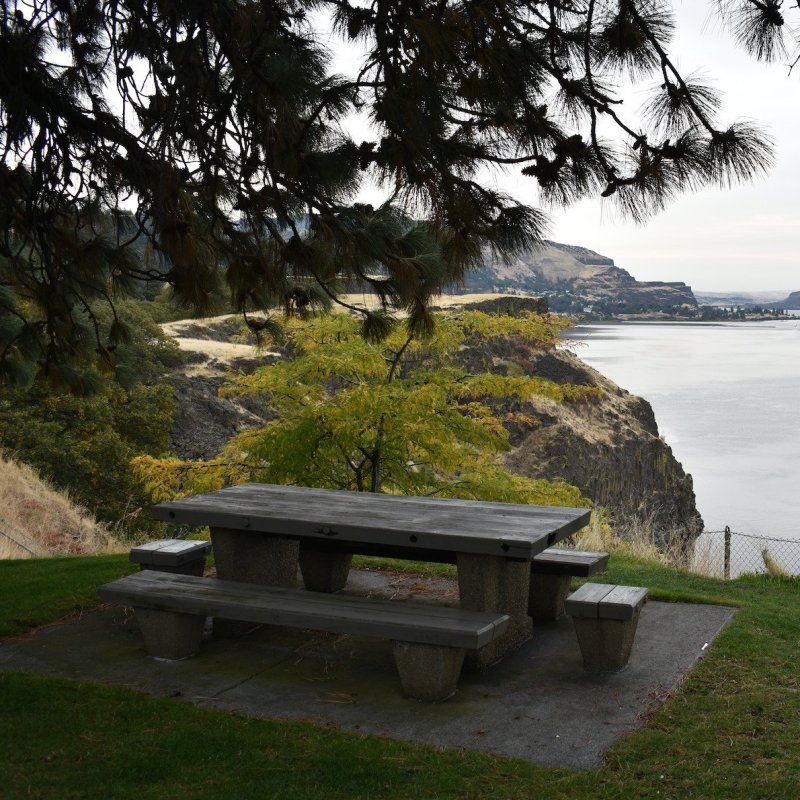
Peggy Cleveland
The jaw-dropping Columbia River Gorge National Scenic Area stretches 85 miles through Washington to the north and Oregon to the south. The great Columbia River flows through the Columbia River Gorge to the Pacific Ocean. It is an incredible corridor steeped in both natural and cultural history. The eastern part of the gorge receives less than 15 inches of rain a year, but the mighty river provides irrigation for farms and vineyards. The western gorge receives an average of 75 inches a year, resulting in more waterfalls than any area in the country as well as lush forests and misty mountains.
Videos by TravelAwaits
Ready Set Gorge provides information on this scenic treasure as well as resources to help plan your trip.
Nestled along either side of the mighty Columbia, towns grew up that utilized the river for transportation and a huge fishing industry. Later the powerful flow of the river generated electricity to light the Pacific Northwest. These unique small towns all have something different to offer. There are world-class museums, wineries with vineyards stretching down to the Columbia River, native peoples’ histories, the Lewis and Clark Voyage of Discovery, and so much more.

Peggy Cleveland
1. Troutdale And Waterfalls
Begin your trip in the darling little town of Troutdale, Oregon. Visit the elegant art galleries and antique shops before heading to the Historic Edgefield, which is a 1911 county poor farm converted into a resort. Also on site is the Edgefield Winery.
From Troutdale begin your journey on the Historic Columbia River Highway. The road begins weaving past orchards and farms with occasional glimpses of Mt. Hood before climbing to Crown Point, which towers 733 feet above the Columbia River. The views here are some of the best in the Columbia River Gorge. The Vista House is an incredible art deco, exquisite work of craftsmanship that has welcomed visitors since 1917.
Next follows a series of figure-eight loops on the highway that wind down toward the river. Pay attention as you will pass a series of incredible waterfalls including Shepperd’s Dell, Bridal Veil, and Wahkeena. The one you can’t miss is Multnomah Falls, the largest of them all. The Multnomah Falls Lodge, built in 1925, is a perfect spot for a lunch break. This iconic waterfall is well known, and chances are you’ve seen images of it and not known where it was. There are trails that can take you to the top or you can just enjoy the falls from the overlook, which is easily accessed, even by those with limited mobility.
Editor’s Note: Our How To Visit Multnomah Falls In Oregon Guide can help you plan your visit.

Peggy Cleveland
2. Cascade Locks
Cascade Locks, Oregon, is a cute little hamlet located on the banks of the Columbia River. There are quite a few things to do in the area. Start with a visit to the Cascade Locks Marine Park. Take a footbridge over the historic locks and canal and on to Thunder Island for some great views of the Bridge of the Gods. Also located at the park is the Cascade Locks Historical Museum with information about the history of the area.
Plan to take a ride on the Columbia Gorge Sternwheeler which is an authentic riverboat reproduction. There are a variety of cruise options that will take you under the Bridge of the Gods for a cruise around the gorge.
The Bonneville Fish Hatchery is not to be missed. It is a surprisingly beautiful destination with historic buildings and lovely, landscaped grounds. The reason you are here is the small white building, the Sturgeon Viewing Center, where the infamous Herman the Sturgeon is located. He is about 10 feet long, 500 pounds, and over 45 years old.
Pro Tip: Purchase a Columbia Gorge Museum Pass for $99. It is good for up to four people and provides admission to 9 Columbia Gorge Museums.

Peggy Cleveland
3. The Dalles
The Dalles, Oregon, is the next destination on your road trip. Driving through the Columbia River Gorge you will notice the terrain changing from lush forests to high desert terrain. It is such a dramatic difference. Make sure to visit the Columbia Gorge Discovery Center and Museum. This stunning building has exhibits covering more than 10,000 years of culture and natural history. Not to be missed: the daily Raptor Presentations.
The Sunshine Mill is one of the most unique wine tasting rooms you will ever see. Nestled among the milling machinery, the tasting room is lots of fun. Additionally, the mill offers Drive-Up Movies on Thursdays, Fridays, and Saturdays throughout the summer: Check their website to make a reservation. Head into town to visit Klindt’s Bookstore and Stationers, Oregon’s oldest bookstore, which still has its original bookshelves.

Peggy Cleveland
4. Maryhill
Maryhill, Washington, is just outside the Columbia River Gorge National Scenic Area but has so much to see and do it is worth a short detour. It is located on the Washington side of the Columbia River. Your first stop is the Stonehenge Memorial located on the original Maryhill town site. It was dedicated in 1918 and completed in 1929. Sam Hill, the creator, worked with leading authorities in the fields of archaeology, astronomy, and engineering to build a full-size replica of the original Neolithic ruin in England. He created the rough, hand-hewn texture by using reinforced concrete with crumpled tin in the forms. It is a breathtaking monument perched high above the Columbia River. From viewpoints within you can see Mt. Hood. It was the nation’s first WWI memorial, and Hill saw it as a monument to peace and heroism. Hill was a true renaissance man and incredibly involved in the history of the area. His ashes are buried at the Stonehenge site.
Hill was also fascinated by roads. He constructed 10 miles of demonstration roads at his own expense. He was instrumental in the development of the Historic Columbia River Highway. The historic Maryhill Loops Road was the first asphalt-paved road in the Pacific Northwest. A 3.6-mile section of the road is available to explore.
The Maryhill Museum of Art is one of the most fascinating museums in the United States. Sam Hill purchased 5,300 acres of land in the area and began work on a mansion overlooking the Columbia River. He never lived in the home and decided to turn it into a museum, which was dedicated in 1926 by Queen Marie of Romania, his friend. This world-class museum is still in a remote area and is open seasonally. It contains over 80 works by Auguste Rodin as well as artifacts from Queen Marie. The museum has incredible views of the gorge and Mt. Hood from its landscaped grounds. Well worth a visit.
In addition to Sam Hill, Maryhill is famous for wine. The Maryhill Winery is one of the largest in Washington and is family owned. It sits on a bluff overlooking the Columbia River with panoramic views. During the summer, enjoy live music on their beautiful vine-covered terrace. Charcuterie boards, salads, pizzas, and other small plates are available to order to enjoy with the wine. If you want to be more active, check out the bocce courts.

Peggy Cleveland
5. Stevenson
Highway 14 follows the Columbia River on the Washington side. The terrain is a little rougher and less populated on the drive from Maryhill to Stevenson, Washington, located in Skamania County. This darling little town is a perfect destination to spend the night and make your base for exploring the gorge. Stay at the Skamania Lodge, a resort built to resemble the iconic national park lodges. Plan a visit to the Columbia Gorge Interpretive Center. This museum has an extensive collection and exhibits on the history of the area. It is also known for the Don Brown Rosary Collection, which is the largest in the world. The most significant one in the collection was donated by John F. Kennedy.
The town of Stevenson has some great restaurants and breweries. I love Clark and Lewie’s, which is housed in the 1908 Old Saloon building. It is located on the waterfront and specializes in fresh local ingredients in both the food and their awesome craft cocktails. I dream about their beet salad with fresh beets on greens with cranberries, almonds, and goat cheese drizzled with their honey raspberry vinaigrette. So yummy.
The Columbia River Gorge National Scenic Area is one of the most beautiful destinations in the Pacific Northwest. It was recognized by Congress with the Columbia River Gorge National Scenic Area Act signed by President Ronald Reagan in 1986. The act protects the scenic, cultural, natural, and recreation resources that will be enjoyed now and in the future. It is arguably one of the best road trips in the United States and one of my favorites.
Pro Tip
Make sure to get outside and enjoy some of the many beautiful hikes in the area. These hiking suggestions are some of the best and are rated from easy to most difficult so you can choose one that matches your fitness level. You’ll also want to check out our picks for Best Hikes In Washington State and Best Hikes In Stunning Oregon.
